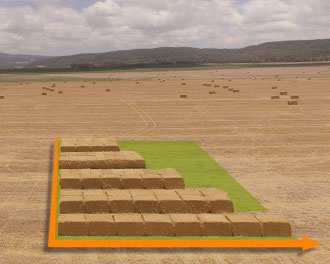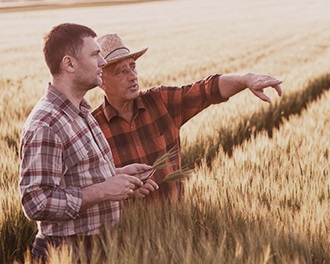FARM GROWN SOLUTIONS
What to look for when buying your baler twine?
a. Raw Material
Ensure that the twine has been produced with raw material from ISO approved producers.
Poor quality raw material can lead to poor quality end product.
b. Easy Feed
On some makes of twine the spool centre can often collapse and cause difficulty when attempting to draw the first few hundred metres from the spool. Choosing a twine with a larger diameter centre that allows the twine to flow freely from the beginning will eliminate problems.
c. Kinked Twine
A consistent and smooth shape to the twine will eliminate potential ‘hang-ups’ in its path through the baler and knotter mechanism, reducing costly downtime when baling.
d. Fibrillation
When buying Big Bale twines, ensure the twine has a high fibrillation. This guarantees a uniform and consistent twist and will give a higher performance through the knotting mechanism. A highly fibrillated twine will give optimum knot strength and also help avoid knot slippage.
LARGE SQUARE BALING
Very careful attention should be paid to the bale pressure, depending upon the type and condition of crop being baled. During periods of extended dry and hot weather, for instance, straw bales may be noticeably lighter than during normal conditions, with the baler set to the same bale pressure setting.
In these circumstances, a decrease in pressure setting will overcome this; or, alternatively, a move to the next heavier twine is recommended.
For baling good quality large square silage bales, it is important to follow a few simple guidelines:
- Ensure the crop has wilted to a minimum of 40 – 50% dry matter (DM), which will produce well-formed bales as well as excellent fermentation.
- Ensure the twine box tension is reduced as much as possible, as twine friction experienced between silage bales during baling is much greater than between straw bales.
- Eliminate as much air as possible from the crop when baling, as it is essential that sufficient crop is packed into the top of the bale to avoid misshapen bales being formed, which may be difficult for an automatic bale-wrapper to handle properly. A reduction in forward speed will help to achieve this by increasing the number of wads per bale.




